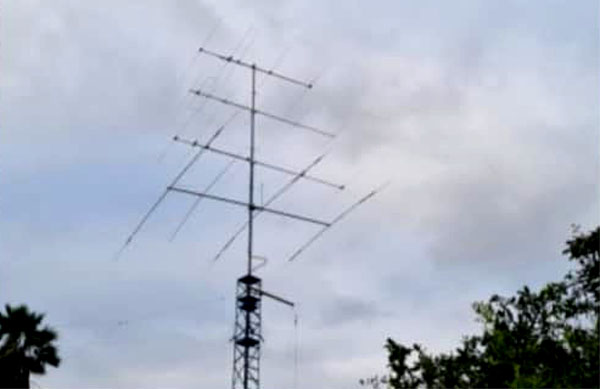In a previous post, I outlined how several radio amateurs in the UK were in the process of applying for Innovation and Trial licences from OFCOM to carry out tests on the 40 MHz band.
The RSGB have now outlined the position of OFCOM on the issue...
***
RSGB statement concerning 40MHz in the UK
There have been recently a number of reports of individual holders of UK Amateur licenses gaining Innovation and Trial licences from Ofcom to conduct experimental transmissions on 40MHz (8m).
Ofcom has made it very clear for several years that there was no likelihood of UK radio amateurs gaining any access to 40MHz which included NoV (Notice of Variation) to a UK amateur licence or an amateur SRP (Special Research Permit).
The RSGB has consulted Ofcom as to the exact status of these Innovation and Trial licences. Ofcom’s reply was as follows:
“We have been approached by a couple of individuals wanting to conduct experiments in the band. Like all other research and innovation requests Ofcom receives we have put these through our Innovation and Trial licensing regime. If the coordination checks are passed, they are being issued with an Innovation and Trial licence. These are issued for up to 12 months on a non-interference, no protection and non-operational basis.
These are not Amateur Radio Special Research Permits and licensees do not fall under the Amateur Radio licence terms and conditions. Therefore, applicants are not required to have passed an amateur exam or hold a callsign. Although we are allowing this experimentation, we would like to make it clear that we have no proposals to allow wider amateur radio access to the 40 MHz band.
Clause 9(6) of the UK amateur terms states “The Licensee may receive Messages from an overseas amateur or from an Amateur duly authorised by Ofcom on a frequency band not specified in Schedule 1 but the Licensee may only transmit on a band specified in Schedule 1 which is authorised under Clause 9(2).”
Users of 40 MHz under an Innovation and Trial (I&T) licence are not authorised under the Amateur Radio licensing regime and there is no requirement to have passed an amateur radio exam to obtain such a licence. Clause 9(6) of the Amateur licence is designed to cover additional frequencies, such as 70 MHz and 146 MHz, which are not contained in Schedule 1 of the Amateur Radio licence but Ofcom has authorised via a Notice of Variation (NoV).
We would like to make clear that we have not duly authorised any amateur to use a frequency band not specified in Schedule 1 through this process. Reception of transmissions authorised under an I&T Licence should therefore be treated the same as those authorised under other licences that Ofcom issues such as business radio or maritime.
We would also like to make clear that I&T licences do not permit operational or commercial use. These licences are designed to support individuals and companies in carrying out research, development, testing and demonstrations of equipment.
Therefore, the use of the 40 MHz band under this licence should be for these purposes only. The licences are granted on the basis that the user will be carrying out such research and not operating on the band in a similar way to the frequencies listed in Schedule 1 of the licence.”
Ofcom’s view is very clear. Any operation on 40MHz in the UK is not Amateur radio and therefore cross-band contacts to such stations by UK radio Amateurs operating on the bands licenced for amateur radio are not permitted.
*** RSGB Statement Ends
Just to highlight that the RSGB are just outlining the position of OFCOM so there is no point in bashing the RSGB over this.




















